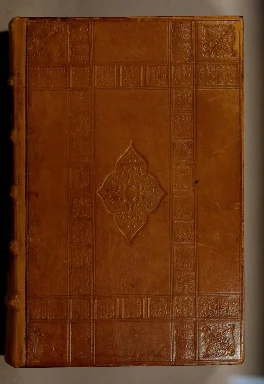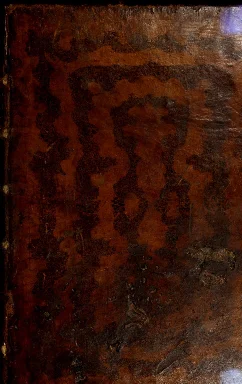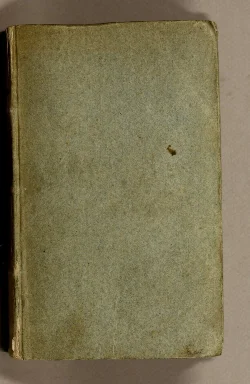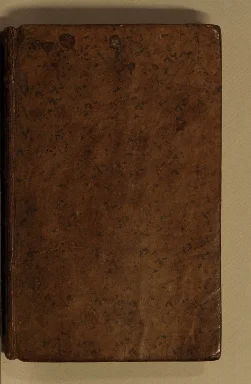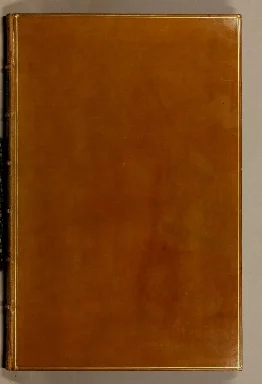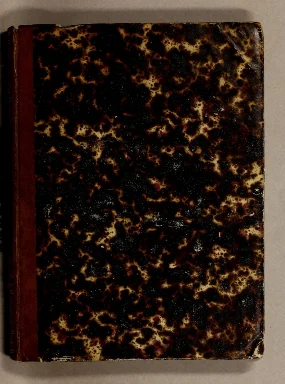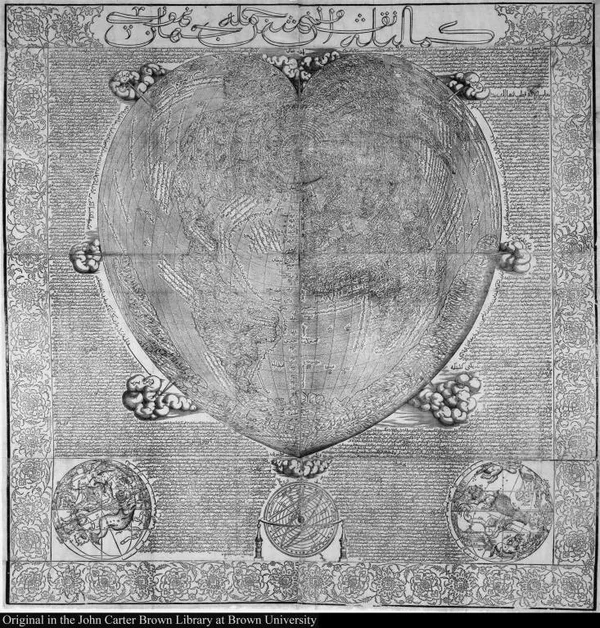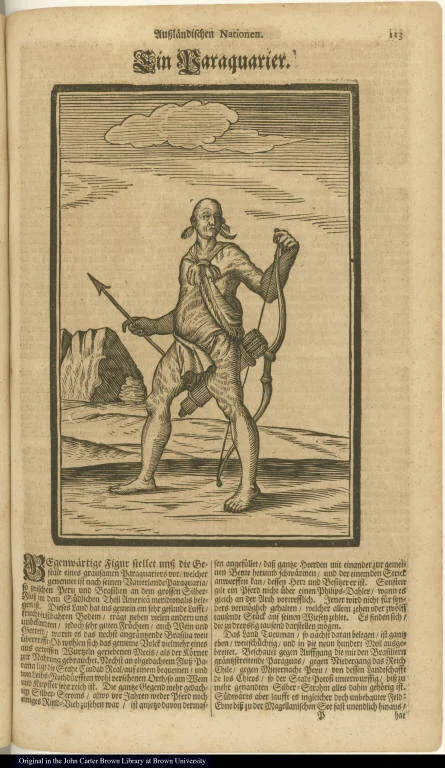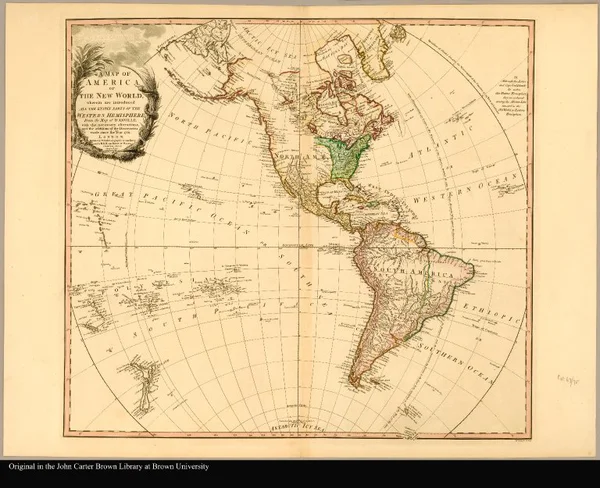1. Spain and the Human Diaspora in 1492
Prima Columbi in Indiam navigatio. Anno 1492.
1492-1600
-
 p. 1
p. 1Columbus Takes Leave of Ferdinand and Isabella
Columbus takes leave of King Ferdinand of Aragon and Queen Isabella of Castile. (Plate viii from the illustrated De Bry edition.)
-
 p. 1
p. 1test
Cosmographiae uniuersalis lib. VI. in quibus, iuxta certioris fidei scri...
1550
-
 p. 148
p. 148Tolerance and the Re-Conquest of Islamic Spain
Officially, a policy of tolerance existed in Islamic Spain. Jews and Christians were freely permitted to exercise their religion, under certain strictures. Christians, for example, were forbidden to proselytize, to build new churches, or to openly display the cross. From March 1492, however, a zero-tolerance policy for observant Jews was the rule throughout Spain. Separate grandfather agreements for Muslims existed in each kingdom and principality. The treaty in Granada allowed the moriscos to retain their religion, but Archbishop Hernando de Talavera was charged with the responsibility of converting them. Early in 1502, conversion or exile was ordered for all Moors in Granada. Similar orders went out for Muslims in Valencia and Aragon in 1526, but many were able to stay after paying a bounty for a 40-year suspension of the edict. The Arabic language and mode of dress was forbidden in 1566, and unconditional expulsion was finally effected between 1606 and 1616.
Auto de la fé celebrado en Madrid este año de M DC XXXII
1632
-
 p. 1
p. 1The Spanish Inquisition
The Inquisition was originally conceived as a means of halting the activities of French heretics. In the beginning, it was run by a committee of Cardinals, but later came under the supervision of Rome. In Spain, a separate operation was conceived by Ferdinand and Isabella with control vested in the Spanish crown, an unconventional arrangement which the papacy grudgingly and haltingly agreed to. The focus of the Spanish Inquisition was in the beginning on New Christians of Jewish heritage who were suspected of relapsing into their old faith. Later, Protestants and Muslims also came under the institutional examination. This pamphlet, a report to King Philip IV, includes a ceremonial prayer addressing “the Judaic superstition, the Mohammedan Sect, and the heresy of Lutherans”.
In practice, the storied Spanish Inquisition was never as effective or well-funded as a modern police state and was forced to rely on occasional denunciations by suspicious and envious neighbors who watched for outward signs of religious scruple, like prayer rituals or an avoidance of pork.
The arms of Spanish cities and the kingdoms of Castile and Aragon are displayed in this plate.
A discouery and playne declaration of sundry subtill practices of the Ho...
1569
-
 p. 1
p. 1The Spanish Inquisition in Protestant Eyes
Though the Spanish Inquisition was focused chiefly on converted Christians suspected of lapsing into former beliefs and practices, Protestant writers and artists in England, Germany, and the Netherlands were the most effective publicists of righteous indignation against the dubious methods of interrogation which commonly resulted in false confessions, if not injury or death. This English engraving accompanied an English edition of a Sanctae Inquisitionis Hispanicae artes aliquot delectae, orginally published in Heidelberg in 1567. Here holding "feet to the fire" is not just a metaphor.
The mysterious author, Reginaldus Gonsalvius Montanus, was probably a Spanish or Flemish Protestant. This is a prime example of the European half of the Black Legend, under which the worst excesses of Spanish policy were presented as the norm. The American portion of the Black Legend was focused on the portrayal of Spanish colonial mistreatment of the New World indigenous peoples.
Annales d'Espagne et de Portugal
1741
-
 p. 1
p. 1Moorish Architecture
Though Muslims in Spain were required to convert or leave the country, Islamic cultural influences remain, the most obvious being architectural monuments built by both Muslim rulers and Christian sovereigns with the help of Muslim workers. The great mosque of Cordoba, the world’s third largest, was refashioned as a great cathedral following Christian victory there.
Some of the most prominent structures are featured in this set of annals by Alvárez de Colmenar, published in the mid-eighteenth century, including the Alhambra and the Royal Palace in Seville.
The Alcázar of Seville, the Moorish-style Royal Palace shown here, was built on the ruins of an old Moorish fort. The Arabic al-quasr means “palace”. Construction was undertaken by King Pedro of Castile from 1364, using Moorish workers, under a distinctly Islamic design. The structure was often enlarged and remodeled, including among other things contrasting Gothic and Italian Renaissance elements. The apartments are still used by Spain’s royal family.
Other Islamic elements of Spain include a residue of the Islamic law used there for centuries, including in particular the titles of officials, such as alcalde (“mayor”), which were also introduced into Spain’s colonial American governments.
Thesaurus exoticorum
1688
-
 p. 421
p. 421The Seige of Vienna
A selling point for this ethnographic collection is its promise to deliver information on all the “exotic” peoples at the borders or Europe and beyond the seas, including no fewer than 15 indigenous peoples of the Americas. However the principal focus of the book is on the Islamic peoples, from North Africa to Mesopotamia and Persia.
Vienna was originally settled by Celts and became an important center for the Romans. Its importance grew in the course of the Crusades. The Turks reached the Holy Roman imperial capital in 1529, but were repelled after a three-week siege. A much greater threat was presented by the siege in July 1683, portrayed in the engraving (page 52).
Individual portraits of principals in the campaign are provided in the upper and lower borders: Count Ernst Rudiger of Starenberg, Holy Roman Emperor Leopold I, Ottoman Emperor Mohammed IV, and Turkish Grand Vizier Ahmed Bassa; below, the Prince of Waldeck, the Elector of Saxony, the King of Poland, the Elector of Bavaria, and the Duke of Lorraine. King John Sobieski of Poland led the defeat of the Turkish army in September 1683.
2. The Shifting Borders of Europe
Registrum huius operis libri cronicarum cu[m] figuris et ijmagibus ab in...
1493
-
 p. 1
p. 1The Fall of Constantinople
Constantinople, the center of the Christian church from the fall of Rome and the capital of the storied Byzantine Empire, finally fell to Turkish forces under the Ottoman Sultan Muhammed II in 1453, just 40 years before this publication. The Church of Hagia Sophia, the sacred palace of the emperors, was refashioned as a mosque, with minarets added and its wall decorations covered.
The Ottoman emperors built a new beautiful city of their own, filled with mosques, palaces, and other public structures. Western Europeans, even including Lutherans, continued their adulation of what the Eastern Church had represented, and maintained some contact with those in the surviving church structure there. Saint Sophia in modern Istanbul is neither a church nor a mosque, but a museum of great renown, visited even by Popes.
This view of Constantinople, as imagined by a central European artist in the year Columbus returned from the West Indies, is from the 1493 [German] edition of the Nuremberg Chronicles.
Supputatio annorum mundi
1545
-
 p. 196
p. 196Luther and Islam
Luther composed this chronology in a millennial context, citing all the most important dates in religious history as he understood them. In the 1490s he noted the arrival of a plague of syphilis (the “French or Spanish disease”) from the newly discovered lands in the west (America). Under the year 630 A.D. he wrote “Mahomet incipit an. 630”, or ‘Mohammed begins’, perhaps referring to the Prophet’s triumphant march into Mecca. Other dates of Islamic importance are cited, including the capture of Constantinople in 1453.
Luther understood the Ottoman Turkish invasion of Europe to be part of a Divine plan to spur more fervent devotion by Christians. However, he did not subscribe to a common belief that the European states should therefore submit to an impending invasion as the acceptance of God’s Plan. He warned against hysteria and counseled continued Christian resistance.
Register des Buchs der Croniken vnd Geschichten
1493
-
 p. 304
p. 304The Fate of Budapest
The German 1493 edition of the Nuremberg Chronicles presents two imaginative facing views of the town of Buda or Ofen on the right bank of the Danube in Hungary. Buda and Pest on opposite banks were both devastated and occupied by the Turkish army in 1541. They remained under Ottoman rule until 1686, when Charles of Lorraine secured them for the Habsburgs. With their original populations largely gone, Buda was resettled with Germans, and Pest with Serbs. The towns were formally united as Budapest in 1873.
-
 p. 212
p. 212Alexandria's Libraries
An artist’s conception of the burning of the storied library at Alexandria, Egypt, from the German 1493 edition of the Nuremberg Chronicle. Pre-Islamic Alexandria held the greatest collection of writings in the ancient world. Its destruction is regretted in Western and Middle Eastern sources alike. The settlement was founded in 332 B.C.E. by Alexander the Great and became the largest city in the Mediterranean basin. It was the greatest city of Hellenistic and Jewish culture, fostering such achievements as the Septuagint, a translation by Jews of the Hebrew Old Testament into Greek. An amazing 700,000 scrolls were housed in two celebrated libraries, and a fine university developed. In later Roman and Byzantine times, it became a great center of Christian learning, rivaling Rome and Constantinople.
The libraries were gradually destroyed from the time of Caesar’s invasion (48 B.C.E.) and suffered especially in 391 A.D. when Theodosius I ordered Pagan temples and other facilities to be destroyed. The city was in commercial decline when it fell to Muslim Arab forces in 642, and its importance lessened further when they moved their capital to Cairo in 969.
Rudimenta cosmographica
1542
-
 p. 75
p. 75Freedom of Conscience
Shown in this map is part of the Balkan region between Turkey and the rest of Europe. At the top center between Hungary and Moldavia lies the mountainous principality of Transylvania, which gained a measure of independence as a tributary of Ottoman Turkey and played it off against Austria.
Transylvania became a kind of microcosm of the Protestant Reformation as the court church and hundreds of other churches turned from Roman Catholic successively to Lutheran, Reformed (Calvinist), and Unitarian belief and practice. In 1568, King John proclaimed the Edict of Torda, authorizing free practice of Roman Catholicism and the three forms of the Reformation that had progressively swept through the country.
The Turkish Sultan maintained a policy of toleration, but was wary of any further signs of interdenominational strife or innovation. When Austria later resumed influence over Transylvania, the edict continued some level of protection for the churches. The statutory acceptance of multiple forms of religion, seemingly so revolutionary in colonial Rhode Island and Pennsylvania, and in the new United States, had an antecedent in this remote region.
Joannes Honter was a native son of multi-lingual Kronstadt / Brasov / Brasso in Transylvania, now part of Romania. He studied at the universities of Vienna and Cracow and lived in Basel, learning wood engraving in addition to his academic studies. His accomplished geographical work was published in 39 editions in several cities, and he also promoted the Reformation ideals of Martin Luther.
Kerckelycke historie vande gheheele wereldt naemelyck vande voorgaende e...
1668
-
 p. 1
p. 1Suleyman the Magnificent
Drawing on a large number of sources in Latin, Spanish, French and Dutch, this Flemish Jesuit prepared a comprehensive history of Christianity and its missions throughout the world in four folio volumes. The present one is dedicated to the lands from Morocco to Tartary, most of them ruled by Muslims.
Hazart writes at length on Islam, detailing the religious customs and facilities. Special attention is given to the state of various Christian groups in Islamic countries in the seventeenth century.
Presented at the left is an artist’s conception of Süleyman I, Sultan of the Turks, 1494/5 to 1566. Continuing the expansion of his father, Selim I, Suleyman the Magnificent brought the Ottoman Empire to the pinnacle of its prestige and power. He defeated the Hungarians at Mohacs in 1526, took the city of Buda, and besieged Vienna in 1529. In 1536 he forged an alliance with King Francis I of France against the Holy Roman Empire, a pattern of foreign policy that endured for three centuries. Süleyman was a generous patron of the arts and literature. He died in 1566 during the siege of Szigetvár in western Hungary
3. Literary Vignettes
Mr. William Shakespeares comedies, histories, & tragedies
1623
-
 p. 1
p. 1The Tragedy of Othello
The publication of the plays of William Shakespeare in this first folio edition of 1623 preserved the plays for posterity. Posterity's knowledge of Shakespeare's very existence was preserved by the publication of this volume. “The tragedy of Othello, the Moor of Venice,” is included in the folio edition.
Othello, presumably an Islamic North African convert to Christianity, is a respected General in the service of the Republic of Venice. The suggestion by the manipulative Iago that his wife Desdemona has been unfaithful leads to Othello’s strangling her. When the certainty of her innocence is revealed, Othello takes his own life. The story, drawn from an Italian novella, is cast in terms of an exploration of the character of true humanity. Othello stands in contrast to the self-centered Iago as the Noble Moor, a character in much the same mold as the Noble Savage drawn from American lore.
The life and exploits of the ingenious gentleman Don Quixote de la Mancha
1742
-
 p. 1
p. 1The Experience of Captivity
Cervantes studied literature and philosophy in Italy before enlisting in the military in 1571. He was wounded in the Battle of Lepanto (1571), losing the use of his left arm; the battle ended the threat of Turkish supremacy in the Mediterranean. Returning to his native Spain, however, Cervantes was captured by Barbary pirates and sold into slavery. After repeated escape attempts in Algiers, he was ransomed in 1580 at great loss to his family. He had a troubled career in government service but met with success at age 58 with the publication of the first part of his masterwork. Don Quixote, understood as a tragedy of idealism in a corrupt world, laid the foundation of the European novel.
In this fictional narrative, it is a band of ordinary Spanish convicts who are making their way to a sentence of forced labor on the King’s own galleys. When the protagonist encounters them, he attacks the guards and sets the prisoners free despite their acknowledged guilt, since he believes no man should be deprived of freedom. This edition is a translation of Cervantes's El ingenioso hidalgo don Qvixote de la Mancha, the first part of which was printed in Madrid, 1605, and the second was published in Madrid, 1615.
Des See-Capitains Franz Urban Bawiers Merckwürdige Reisen und Begebenhe...
1752
-
 p. 6
p. 6Another Captivity Story
Ostensibly a true account by an actual voyager, this is a narrative of mutiny, piracy, privation, and shipwreck during a voyage allegedly extending from 1710 to 1717. Toward the end of this adventurous, novelistic account, the author-protagonist meets a group of Moorish women on the shore of an island. When “savages” attack the Europeans, the Moorish women aid them in their flight. They sail to a There they are treated as guests and learn the story of the Moorish King Jacquin.
Neshchastnyi︠a︡ prikli︠u︡chenīi︠a︡ Vasilīi︠a︡ Baranshchikova, mi︠e︡shc...
1787
-
 p. 5
p. 5A Russian in America and Turkey
Probably written in cooperation with someone with the initials "S.K.R.," this inventive adventure novel is based in part on the actual travels of a citizen of Nizhnii Novgorod, but only parts of the Unfortunate Adventures are supported by documentary evidence. Baranshchikov is kidnapped from a Baltic port and sold into servitude on the Caribbean Island of St. Thomas, inducted into the Danish colonial forces, and then becomes a house servant in Puerto Rico. Escaping to Africa, he makes his way to Turkey, where he is converted to Islam and becomes a Janissary in the elite ranks of Turkish military service. After years in the Ottoman realm, he succeeds in returning to Mother Russia.
It appears that the book was composed in an effort to make enough money to pay off old debts for which he was imprisoned on his return. Baranshchikov has a lot to answer for in Russia–among other things, bigamy. He offers that the turning point in Turkey came when he was induced to accept a second wife.
An authentic narrative of the shipwreck and sufferings of Mrs. Eliza Bradley
1821
-
 p. 1
p. 1A Christian Woman Captive
News of redeemed captives like James Riley on the North African coast quickly inspired a host of fictional narratives posing as true tales. The purported autobiographical account of Eliza Bradley, an Englishwoman from Liverpool, circulated in thirteen American editions, though no such person was documented in England. Eliza turns to the comfort of the Bible in her tent, and the story serves as an instructive tale of Protestant religious conversion.
4. European Travellers
Bellum Christianorum principum, praecipue Gallorum, contra Saracenos, an...
1533
-
 p. 7
p. 7The First Crusade
This remarkable 16th-century compendium found its way to Providence because it contains a Latin translation of the initial report of Columbus on his first American voyage. But the book also presents a story of 700 years of struggle between Christianity and Islam. In particular, Robertus presents an account of the First Crusade, while Carolus Verardus offers a narrative of the expulsion of Muslims and Jews from Spain.
Despite an avowed holy mission, the Crusades also promised secular goals like the capture of personal wealth, which seriously imperiled its objectives. The murder of European Jews enroute and of Muslims and Jews in Jerusalem itself stained the Crusaders’ accomplishments.
For their part, the Muslim soldiers understood the defense of Jerusalem to be a purely straightforward military operation, and were confounded by the seemingly bizarre behavior of the Crusaders. The foreigners, generally characterized as “Franj,” or “Franks” from the First Crusade, are recorded as having paraded around the city walls, then kneeling in prayer before throwing themselves onto the defensive walls, as if expecting their collapse. After one long, but successful siege of a Syrian town in 1098, sources record the Crusaders as having nourished themselves through cannibalism, with no food of any kind remaining in the area. These experiences informed the perception of Crusaders in the region.
Die ritterliche vnnd lobwirdige Reyss, des gestrengen vnd vber all ander...
1548
-
 p. 22
p. 22A European in Arabia
The travels of the Italian merchant Varthema between 1502 and 1508 rank as one of the most remarkable of the 16th century. Ostensibly converted to Islam, the European undertook the pilgrimage to Mecca and traveled across much of the Islamic world, experiencing many dangers before returning to Europe. His narrative, published in numerous editions, provided considerable information on a world largely closed to Europeans. Although some other voyagers found much fault with Varthema and cast doubt on the veracity of the account, scholars in modern times have found it to be largely accurate. Some of the early Varthema editions were enlarged by the addition of Juan Díaz’s narrative of the Grijalva expedition a world away in Yucatán. A traveler on a camel is presented on leaf C1v.
The true travels, adventures, and observations of Captaine Iohn Smith, i...
1630
-
 p. 1
p. 1Captain Smith's Adventure
Captain John Smith is known to every young American as the English settler of Virginia and the man supposedly saved by Powhatan’s daughter, Pocahontas. How he obtained the title of Captain is addressed less often. Smith received military training in France and eventually, late in 1600, signed up with the Austrian forces confronting Ottoman Turkey in eastern Europe. He attained the rank of Captain before being captured in Transylvania. At the battle of Verestorony / Rothenturm, 12 miles south of Sibiu / Hermannstadt, the outnumbered Austrians and Smith’s fellow English soldiers faced 40,000 Crimean Tatars and two divisions of Turkish troops. The sky was literally darkened with Tartar arrows and 30,000 lay dead at the battle's conclusion. While pillaging the bodies, soldiers reckoned the wounded Smith in his armor as a suitable candidate for ransom, and treated his injuries.
Smith was among those sold into slavery at Axopolis and sent on to Adrianopolis in chains. He was then transferred to Timor, Bashaw of Talbrits in Tartary. He was put to work as a thresher, but often ridiculed and beaten by his new master. One day he responded in anger, beating his master to death. He escaped on horseback and rode aimlessly until happening on a Russian fortress on the River Don. There he was freed of his irons and given sustenance. He made his way back through Europe to Morocco, and arrived back in England in the winter of 1604-05. The bibliographically complicated first edition, shown here, is one of the best-illustrated, with graphic display of Smith’s adventures in the Balkans and Asia, including military exploits, his capture, and his dramatic escape.
Purchas his pilgrimes. In five bookes
1625-1626
-
 p. 1
p. 1How the Turks Live
The learned Englishman Sandys traveled from Venice to Constantinople in 1610 and drafted vivid descriptions of the life of the Greeks and Turks he observed. Here he describes the manner of dress of Turkish women (page 1298), but notes that they cover their faces with linen, excepting the eyes, when they leave the private spaces of the home. The appearance of the habit is conveyed here by a British artist.
Eduward Meltons, Engelsch edelmans, zeldzaame en gedenkwaardige zee- en ...
1681
-
 p. 1
p. 1Transport by Caravan
This set of narratives was published under the pseudonym of Edward Melton and may have been compiled from a variety of sources by Godofridus van Broekhuizen. Presented here is a lengthy description of a land voyage across Arab and Persian territory and caravanserais (caravan rest stops) from Anatolia to Persia (page 240). The narrator describes in detail the accommodations for men, horses and camels. There are also numerous instances of the abuse of slaves and harsh punishments of criminals.
Curieuse aenmerckingen der bysonderste Oost en West-Indische verwonderen...
1682
-
 p. 1
p. 1Social Life Abroad
The late seventeenth century was a time of much interest in customs and the manner of living around the world. Dutch and German publishers were especially active in combining accounts and illustrations. Simon de Vries, who drew much of his material out of the writings of the German compiler Erasmus Francisci, provided in this volume illustrations of American Indian ritual sacrifice, a Turkish slave gang of Christian prisoners, and a tableau of unusual Persian punishments for malefactors.
In the ambitious engraving shown, wedding customs around the globe are presented in a single, confusing tableau: Nuptial ceremonies and processions are portrayed of Tupi Indians, Peruvians, Persians, Abyssinians, Muscovites, Hindustanis, and Chinese.
5. The Exchange of Knowledge
[A complete and perfect map describing the whole world (translated from ...
1568
-
 p. 1
p. 1The Turkish World Map of 1568-1569
This woodcut map with place names and text in Turkish had a curious history. It is based on Oronce Fine’s Cosmographia universalis ab Orontio olim descripta, Venice, 1566. This version has been rendered in Arabic characters, but in the Turkish language, along with Persian and Arabic loanwords. The story goes that it was prepared by a Venetian domestic slave named Hadjii (Haci) Ahmed and intended for the Middle Eastern market. Ahmed was described as a learned man of Tunis, having studied law and philosophy in Morocco before his capture. While the economy of the Venetian Republic was entirely geared to commercial principles, the government judged the geographical information contained in the map too powerful to be marketed to the Ottoman Turks, and a danger to civil security. Its suppression was ordered and the woodblocks were impounded by the Venetian government. These artifacts came to light again in 1795, when they were used to make 24 new impressions. The copy held by the John Carter Brown Library is one of at least six known to have survived.
[Indian of Paraguay]
1651-1700
-
 p. 1
p. 1European Korans
The principal focus of the book is on the Islamic peoples, and it includes at the end a complete Koran in German. European presses produced Korans in Latin and vernacular languages from the mid-sixteenth century.
6. The Spread of Printing and Engraving
Tārīkh al-Hind al-Gharbī al-musammā bi-Ḥadīth-i nau
1142-1730
-
 p. 1
p. 1Latin America in Turkish
Drawing on descriptions in López de Gómara’s sixteenth-century account of America and other sources, a Turkish artist imagines a scene in which an archer prepares to shoot an opossum that threatens a chicken house. A sloth is poised nearby, while a rooster stands guard. This is thought to be the first illustrated book in Ottoman Turkish. The text in this book is in the Arabic script used to print Turkish until the adoption of the Roman alphabet by Kemal Atatürk in the twentieth century.
Some memoirs of the life of Job, the son of Solomon the high priest of B...
1734
-
 p. 1
p. 1Job, a Muslim Slave in Maryland
A great untold story is composed of the countless silent narratives of African origins: the homelands, the family histories, the religious training and practice of each individual uprooted from an accustomed life and sold multiple times into a new world of servitude in the Americas. Whether they came from Islamic or traditional African religious origins, many of the adults likely continued their religious customs in whatever way possible. There is some record of awareness of plantation managers of religious identities, as for example those who provided their workers rations of beef, rather than the customary pork that was less expensive, but objectionable to Muslims.
A rare exception to this information vacuum is the life of one Job, the grandson of Hibrahim, of the kingdom of Futa or Senegal. Job’s given name was Hyuba, Boon Salumena, Boon Hibrahima, and his surname is given as Jallo. In his community, Job’s father taught his son Arabic and how to read the Koran. Job had two wives and four children when he was taken. Having learned beginning English in Annapolis, Maryland, Job wrote a letter to his father in Arabic, relating the misfortunes that had befallen him. A series of compassionate acts resulted in his traveling with Bluett and others to England. On ship he was observed to conduct devotions faithfully and permitted to execute the traveling party’s stock for meals, so that he could be certain it had been prepared under Islamic dietary regulations.
Job’s freedom was secured in England, where he was received in noble company, and he was returned to Gambia on one of the African Company’s ships, to “the honour of the English nation.” The remainder of the book presents stories of Job’s African life as related to Bluett. Job had memorized the Koran, and wrote out three manuscript copies while in England. Bluett emphasized Job’s monotheism, his objections to pictorial images, and his piety and character. The author hoped that the spirit of English charity would return more Africans to their homelands.
Cedid atlas tercümesi
1218-1804
-
 p. 1
p. 1A Landmark Turkish Atlas
Published by the Ottoman Military Engineering School Press and containing 24 maps, this is the first Muslim-published world atlas based on European geographic knowledge and cartographic methods. The maps were based on William Faden’s General Atlas; Faden’s miniature Atlas minimus is presented next for comparison. Issued with the Turkish Atlas is Mahmud Raif’s Ucaletü'l-cografiyye, an 80-page geographical study. Shown here is the Western Hemisphere. The text and labels are in Ottoman Turkish in the Arabic script used up to 1928 (when Arabic script was prohibited).
A map of America, or the New World wherein are introduced all the known ...
1797
-
 p. 1
p. 1An Atlas's British Model
Faden’s General Atlas was the model for the Turkish Atlas shown above. It is represented here by Faden’s miniature atlas.
7. The Travails of Commerce: Conflict at Sea
Leben und tapffere Thaten der all-berühmtesten See-Helden, Admiralen un...
1681
-
 p. 155
p. 155Naval Strategists
This Dutch compendium, here translated into German, of the world’s greatest naval heroes of the past few centuries, includes a chapter on the Barbarossa brothers, early naval strategists in the Mediterranean Sea and Kings of Tunis and Algiers. Another chapter tells of Admiral Engelbert de Ruyter, who defended Dutch interests against pirates in the same region.
Khayr al-Din Barbarossa (c. 1483-1546) and his brother Aruj seized Algiers from Spain and placed it under Turkish rule. As admiral under Süleyman I, he conquered more of the Barbary coast from 1533 to 1544. He twice defeated the great Genoese admiral Andrea Doria and attacked the coasts of Spain, Greece, and Italy. His son Hasan succeeded him in Algiers.
L'art des armées navales, ou, Traité des évolutions navales
1697
-
 p. 1
p. 1The Battle of Lepanto
This compendium of French naval science is open to the conceptual representation of the Turkish and western fleets at the Battle of Lepanto. The Battle of Lepanto on October 7, 1571, occurred off a Greek Island.
Turkish forces under Uluç Ali Pasha were confronted by allied Christian forces under John of Austria. 200 galleys drawn chiefly from Spain, Venice, the Papacy, and other Italian states were victorious over the roughly equivalent Turkish fleet. The allied forces lost 7,000 men, nearly a quarter of their numbers, but 15,000 were killed or captured on the other side. About 10,000 Christian galley slaves were freed, and the Turkish navy as it then existed was destroyed. The battle laid low the myth of Turkish naval invincibility, but they retained military supremacy on land. The Turkish navy was quickly rebuilt. One important lesson of the battle was of the limitations of a galley-based fleet against one of more agile sailing ships.
A tongue-combat, lately happening betvveene tvvo English souldiers in th...
1623
-
 p. 1
p. 1Idled Privateers
Political accusations fly fast in this conversation between two disgruntled English soldiers in 1623. One soldier claims that Queen Elizabeth (d. 1603) secretly authorized the shipment of artillery and ammunition to the Moors of Grenada in order to cripple Spain’s interests doubly at the time of a revolt in the Netherlands.
In fact, the state of peace at the beginning of the seventeenth century idled large numbers of English and Dutch privateers who had aided the English war effort. No longer needed, and even opposed by King James, hundreds of them set sail for the Barbary coast, where their assistance was welcomed by the Muslim pirate community. The English and Dutch corsairs were especially valuable in transforming the Barbary pirates from a galley-propelled operation into a more effective and threatening force employing modern sailing technology.
A compleat history of the piratical states of Barbary
1750
-
 p. 1
p. 1Barbary Pirates
J. Morgan based this account partly on Laugier de Tassy's "Histoire du Royaume d'Alger.” Morgan introduces his subject in this way:
"Our prejudiced ideas of the words Barbary and Barbarian imply cruelty, injustice, irreligion, and even inhumanity. Ignorant people imagine that a Barbarian differs not in temper from the African wild beasts, actuated only by the impulses of ferocity.... But the narratives of many creditable travellers will easily explode such injurious notions. It will hence appear, that there are multitudes of nations in the world, and some in Europe itself, who are more ignorant and savage ... than the inhabitants of Barbary; of which the greatest part are, at present, very humane and regularly governed."
Morgan cites Julius Caesar as the Roman who applied the common derogatory borderland term of "Barbarian" specifically to the territory of North Africa. Presented here is an engraved view of Algiers and environs, including near the center a team of slaves pulling stones on a cart.
The Algerine spy in Pennsylvania: or, Letters written by a native of Alg...
1787
-
 p. 1
p. 1A Spy from Algiers?
At the time of the Constitutional Convention in Philadelphia, American sailors were held captive on the Barbary coast. An American central government had not yet been formed, and there was little that could be done to address this national concern. This anonymous pamphlet, purportedly written by an Algerian agent named Mehmet, soon attracted the attention of the delegates. The writer referred to his wife and child back home and wondered at the informality of men and the freedom of women to walk the streets alone and uncovered. He noted as a weakness the unwillingness of Americans to commit to building a system of education. The “spy” viewed the constitutional delegates as trapped in narrow partisan interests and unlikely to unite in their own national interest.
Peter Markoe is credited with authorship, and the work is viewed as helping inspire the move to a strong federal union, coupled with the development of a navy. Born in the Danish West Indies, Markoe was educated at Oxford and served in the Pennsylvania militia.
Eine kurze Nachricht von Algier
1794
-
 p. 1
p. 1The Barbary Coast
The Philadelphia publisher, Matthew Carey, issued this work in both English and German editions, helping furnish public information about a region that now frequently attracted public attention.
An historical and geographical account of Algiers
1797
-
 p. 1
p. 1American Captives
The book is dedicated to Joel Barlow, the American diplomat, who worked for a peace agreement and the release of captive American citizens.
An important work in transmitting information about captives taken for slavery or ransom in the Barbary wars and piratical depredations. The frontispiece illustrates the punishment variously named bastinado, falanga, or falaqa, in which the soles of the feet are beaten by various means, taking advantage of the concentration of nerve endings there. In Muslim cultures, the very act of baring the soles of the feet is considered a humiliation. While this method of torture or punishment is extremely painful for the victim, it leaves limited physical evidence. Its use continues under autocratic regimes in modern times.
American naval biography
1815
-
 p. 1
p. 1American Heroes
This biographical collection published in downtown Providence includes the careers of Stephen Decatur and William Bainbridge, both closely identified with heroic naval actions against the Barbary pirates.
Coincidentally, the book was published in a shop close to a building where the “Turk’s Head,” a figurehead preserved from the prow of a sailing ship, was proudly displayed. The Turk’s Head had been such a beloved local icon in downtown Providence that it was reproduced in granite over the entrance to the Turk’s Head Building, a skyscraper, in 1913.
Credits
Editorial Notes: Items Pending Integration
Project Creator(s)
- The John Carter Brown Library


